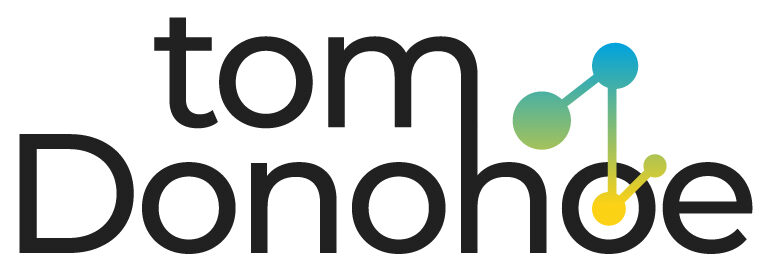How to measure social media ROI

You need to know how to track and calculate social media ROI. This will show you your social media campaigns’ return on investment (ROI) in dollars, euros, or yen. You can then double down on the strategies that work and eliminate those that do not.
Social media is essential to any marketing strategy to increase brand awareness and ROI. It is becoming more popular as shoppable post and social commerce become a reality.
This blog will show you how to measure ROI and give tips on improving it to increase the value of your social networking activities.
What is social media ROI?
Let’s first define social media ROI. It’s like any other return on investment. It’s the sum of the social media activities and the amount invested.
Here’s how to calculate the ROI of social media.
(return on investment) / investment made 100 = social media ROI
Your ROI value should be greater than 0 percent to ensure you make money with your social media campaigns. Anything less than that, you’re losing money.
How can you calculate the social media ROI?
The objectives of your company and the metrics used will determine how you calculate ROI. Download our social-media campaign ROI calculator to keep track of your goals and costs.
So, for example, do you prioritize brand awareness or lead capture or sales when creating your ROI metrics? To prove your value, you should link your ROI metrics back to your objectives and goals when creating them.
You have many options when it comes to social media goals. It all depends on what your core purpose is, which could be:
- Followers are welcome
- Click-through rates
- Conversions
- Completed lead generation forms
- Downloaded files (e.g. eBook, whitepaper)
These are some standard metrics that can be used to measure social media ROI:
- Engagement- One of the most valuable and common metrics, engagement on social networks shows how people interact with your brand and content. Altimeter research showed that more than a third (33%) of content executives use engagement to measure performance. There are many types of engagement metrics, including clicks, shares and likes.
- Reach – This metric measures who interacts with and sees you on social media. It measures audience size and shares. It also looks at how much your content is shared and traveled. This can be more difficult to measure than engagement because it only measures how many people saw your post. However, it is important to keep track.
- Leads – Social media is a key component of lead generation. It’s crucial to understand which channels and what content drive those leads. You want to know your lead count to demonstrate your ROI.
- Conversions – It’s crucial to track how your posts and content convert when you invest so much time in social media. UTM parameters are a great way to track clicks per campaign and platform.
How can you track ROI in social media?
After you have chosen a goal for your social media activity, you need to create a tracking system for your ROI.
- This is easiest to do in Google Analytics. This can be done by setting goals and event tracking. To understand what’s involved, read our Google Analytics Goals guide.
- You can track other metrics such as likes, shares, and brand mentions using platforms like Ahrefs or Buffer.
- This video will show you how to use Google Analytics if you are new to it.
Note: Google Analytics 4 has r Eplaced Universal Analytics (which is what most marketers use), so be aware of changes to ensure you can account for them.
How do you assign money values in order to calculate ROI?
Next, you will need to determine your social media ROI. Historical data is the best method to do this. This will allow you to calculate the lifetime value (LV) for each customer. If your average LV is $100, then it means that 1/10 people who see your content convert to customers. The value of getting someone to convert is $10 ($100 divided 10).
Another way to calculate monetary value is to estimate. Although this isn’t the most reliable method, it can be used if you don’t have historical data. This is the best place to begin. To determine a real value, you should look at how many people have visited your site and what the PPC budget for social ads conversions. This paid budget forecasting tool can help you determine costs.
How can you calculate the social media investment or spend?
You need to calculate your social media ROI by determining how much you spend creating and implementing campaigns. Here are some examples of spend:
- Your time, or the time of the marketing team It takes time and effort for campaigns to be set up. So account for time spent on social media.
- Software – Account for all software and tools that you buy or pay regularly
- Social advertising spend If you are running paid social media campaigns, make sure to take your weekly and monthly budget into consideration
- Content creation Social media is dependent on content, so budget for the money needed to create it
- External agencies Do you employ a copywriter? In your calculations, include the amount you invest
Tips to increase your social media ROI
There’s always room to improve, no matter how high your average social media ROI is.
- Get to know your audience Understanding your audience is key to social media success and a high return on investment. You must know who is engaging with you on which platforms and how, so that you can create content that resonates. Use this buyer persona template to get them created today!
- Use creativity to make your content stand out. With so many content on social media, it can be difficult to get noticed. It’s all about quality content , not quantity. So take the time to create relevant, interesting, and entertaining content.
- Use social leads generation According to Statista Data on social media budget shares, marketers in the United States reported that social media accounts account for 15% of their marketing budgets. This amount of spending requires social media to generate leads or customers. Make sure to include lead generation forms in valuable content assets, such as eBooks and online calculators. To capture customer information, you can use online calculators or eBooks.
- Optimize – Adjust and optimize your organic social media posts with new imagery, keywords, and headlines. Pay media: Try new audiences and ad types to see the results.
To increase sales and brand awareness, Made, an online furniture retailer, used augmented realities ads on Facebook. People with iOS devices were able to place 3D virtual furniture in their own homes thanks to the immersive experience. Campaign results saw an increase in purchases by 2.5X, ad recall by 40%, and an increase of 3X the add-to-cart rate.





